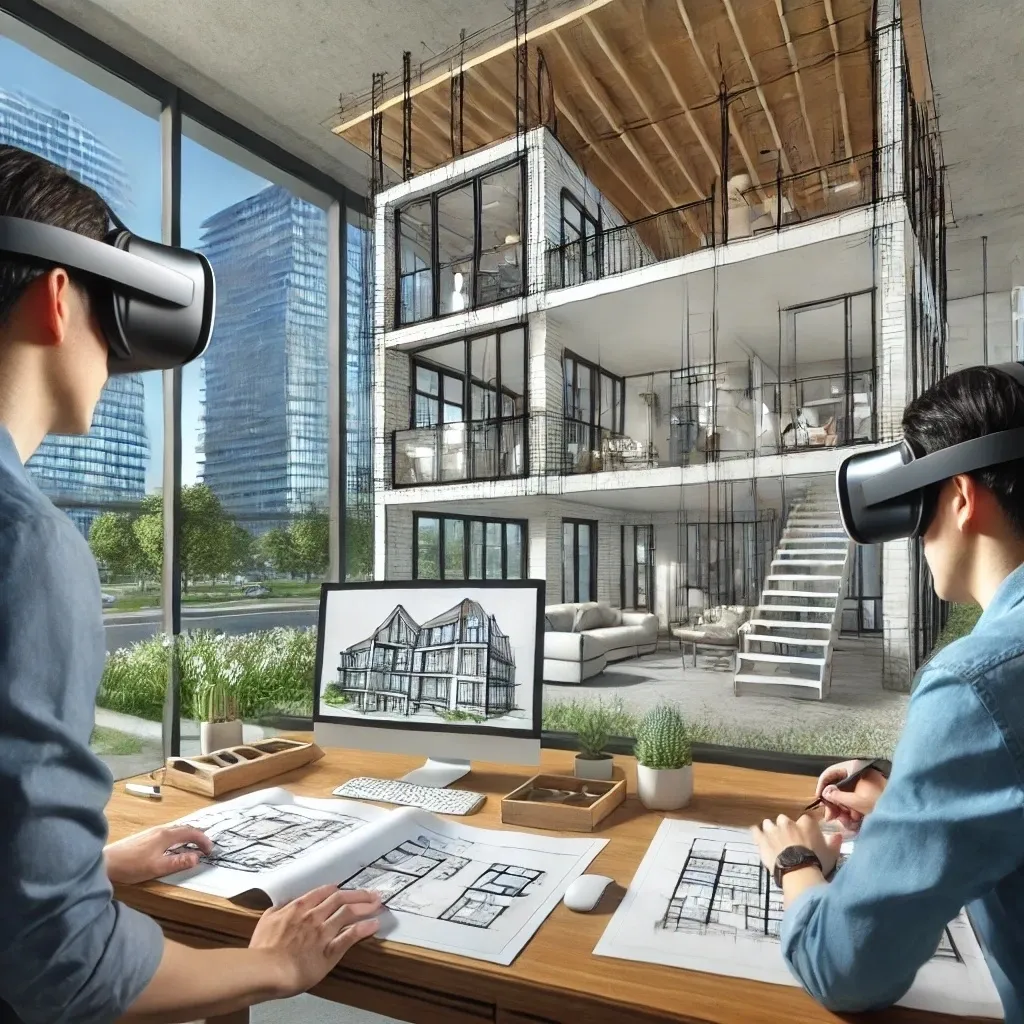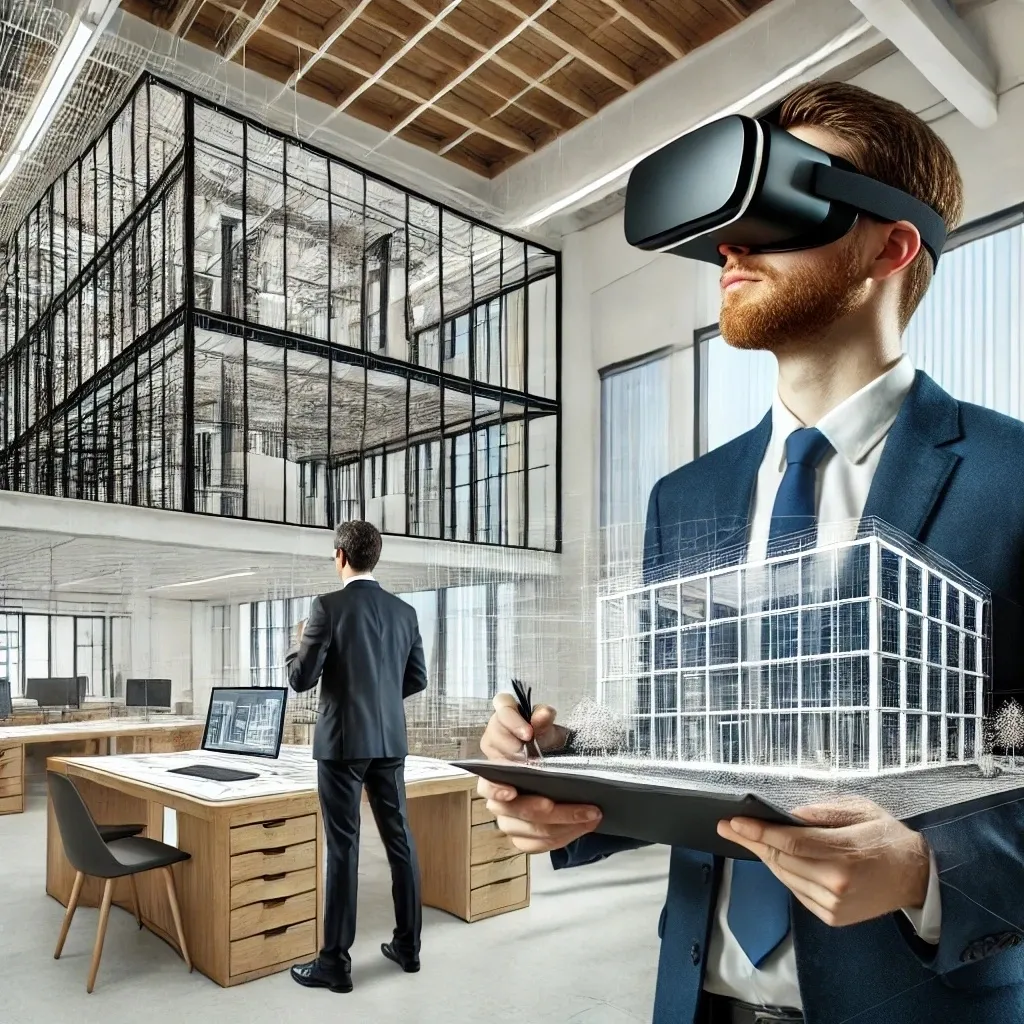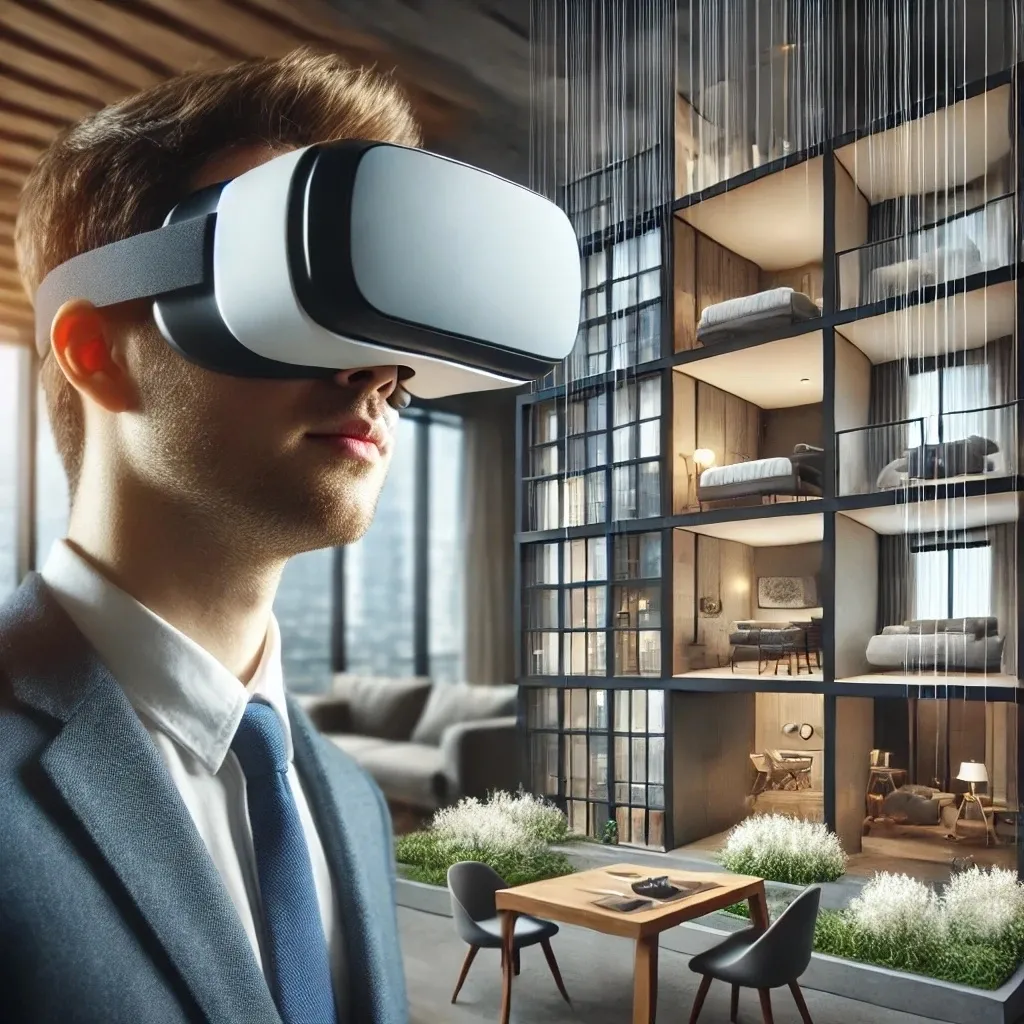In recent years, virtual reality (VR) for architecture has emerged as a powerful tool that is transforming the way architects, designers, and clients experience and interact with architectural designs. Gone are the days when 2D blueprints and even 3D architectural visualizations were the only ways to present a project. Today, VR technology allows for immersive, interactive, and highly realistic experiences that make it possible to walk through buildings before they are built. This article explores how virtual reality is enhancing 3D architectural visualization and why this combination is becoming the future of architecture.
What Is Virtual Reality in Architecture?
Virtual reality for architecture involves the use of VR technology to create a fully immersive, digital environment that allows users to explore and interact with a 3D representation of a building or space. Unlike traditional 3D architectural visualizations, which are typically static renderings or videos, VR allows the user to move around the environment, change perspectives, and even interact with certain elements of the design. This creates a more engaging and intuitive experience for architects, designers, and clients alike.
The Evolution of 3D Architectural Visualization
3D architectural visualization has long been an essential part of the design and planning process. From the early days of hand-drawn perspectives to the introduction of CAD software, the field has evolved significantly over the years. Today, 3D renderings and animations are commonplace in architecture and real estate, providing a much clearer and more accurate representation of a building than traditional blueprints ever could.
However, even the most sophisticated 3D architectural visualizations are limited by the fact that they are essentially flat images. While they offer a better understanding of spatial relationships, scale, and materials, they still cannot fully convey the experience of being inside a building. This is where virtual reality comes into play.
The Benefits of Virtual Reality for 3D Architectural Visualization
The combination of virtual reality and 3D architectural visualization offers a range of benefits that are changing the way architecture is designed, presented, and experienced.
1. Immersive Client Experience
One of the most significant advantages of using virtual reality for architecture is that it provides an immersive experience for clients. Traditional renderings, no matter how detailed, are still viewed on a screen or printed on paper. They require the viewer to interpret the image and imagine what it would be like to walk through the space.
With VR, clients can step inside the design. They can explore the building at their own pace, look around corners, walk down hallways, and get a sense of the flow and functionality of the space. This immersive experience helps clients better understand the design and feel more confident in their decisions.
2. Real-Time Design Changes
In the traditional design process, making changes to a 3D architectural visualization often involves significant time and effort. Designers need to go back to the drawing board, update the model, and then render new images or animations. This can slow down the design process and lead to costly delays.
With VR, changes can be made in real-time. Architects and designers can make adjustments to the design while the client is inside the virtual space. For example, if a client wants to see what the living room would look like with different flooring or lighting, the designer can make those changes instantly. This flexibility allows for a more collaborative design process and ensures that clients are fully satisfied with the final product.
3. Better Communication of Scale and Space
Understanding scale and space is one of the biggest challenges in architecture. Even the most detailed 3D renderings can be misleading when it comes to the actual size of a room or the relationship between different elements of the design.
Virtual reality for architecture solves this problem by allowing users to experience the space in full scale. They can walk through rooms, stand next to furniture, and get a true sense of the dimensions and proportions of the building. This helps clients make more informed decisions about the design and reduces the likelihood of misunderstandings or misinterpretations.
4. Enhanced Design Review Process
The design review process is a critical part of any architectural project. In the past, this involved looking at 2D drawings, 3D renderings, and models to assess the design and make necessary changes. While this process is still effective, it has its limitations.
With VR, the design review process becomes much more dynamic and interactive. Architects and stakeholders can walk through the virtual space together, discussing potential changes and seeing how they would impact the design in real-time. This allows for a more efficient review process and ensures that all parties are on the same page.

5. Improved Collaboration Between Teams
Architecture is a collaborative process that involves many different teams, from architects and engineers to contractors and interior designers. Communication and collaboration are essential for ensuring that everyone is aligned and working toward the same goal.
VR enhances collaboration by providing a shared virtual environment where all team members can meet, regardless of their physical location. This is especially valuable for large projects with teams spread across different cities or even countries. With VR, everyone can step inside the design, discuss changes, and ensure that the project is on track.
6. Early Detection of Design Flaws
One of the biggest challenges in architecture is identifying design flaws before construction begins. Traditional 3D architectural visualizations are helpful, but they can sometimes miss critical issues related to functionality, safety, or aesthetics.
With VR, architects can detect design flaws early in the process. By walking through the virtual space, they can spot potential problems that might not be apparent in a static rendering. For example, they might notice that a doorway is too narrow or that a window placement creates awkward lighting conditions. Addressing these issues early in the design phase can save time and money and ensure that the final product is of the highest quality.

How Virtual Reality Is Used in Architecture
There are several ways in which virtual reality for architecture is being used to enhance the design and presentation of buildings.
1. Virtual Tours and Walkthroughs
One of the most common uses of VR in architecture is for virtual tours and walkthroughs. These allow clients to explore the building as if they were physically present, providing a much more realistic experience than traditional renderings or animations. Virtual tours are especially valuable for real estate developers who want to showcase properties to potential buyers before construction is complete.
2. Interactive Design Presentations
VR is also used for interactive design presentations, where architects can walk clients through the building while making real-time changes to the design. This allows for a more collaborative and dynamic presentation, ensuring that clients are fully engaged in the process.
3. VR for Marketing and Sales
In addition to its design benefits, VR is becoming a powerful marketing and sales tool for architects and real estate developers. By creating immersive virtual experiences, developers can showcase their properties to potential buyers and investors in a way that is much more compelling than traditional marketing materials.

The Future of Virtual Reality in Architecture
As VR technology continues to evolve, its impact on architecture will only grow. The integration of virtual reality and 3D architectural visualization is still in its early stages, but it is already transforming the way buildings are designed, reviewed, and presented.
In the future, we can expect to see even more sophisticated VR tools that allow for greater interactivity and realism. For example, architects may be able to simulate different weather conditions or time-of-day lighting within the virtual space. Clients might be able to furnish the space with different furniture options or test out various materials and finishes.
We may also see the integration of augmented reality (AR) with VR, creating a hybrid experience where users can interact with both the virtual and physical worlds simultaneously. This could open up new possibilities for design, collaboration, and construction.
Conclusion
Virtual reality for architecture is revolutionizing the way architects, designers, and clients experience and interact with buildings. By combining the power of 3D architectural visualization with the immersive capabilities of VR, architects can provide clients with a much more engaging and intuitive experience. From real-time design changes and enhanced collaboration to better communication of scale and space, the benefits of VR are clear. As technology continues to advance, the role of VR in architecture will only become more significant, making it an essential tool for architects and designers in the years to come. How Virtual Reality Enhances 3D Architectural Visualization How Virtual Reality Enhances 3D Architectural Visualization how virtual reality enhances 3d architectural visualization